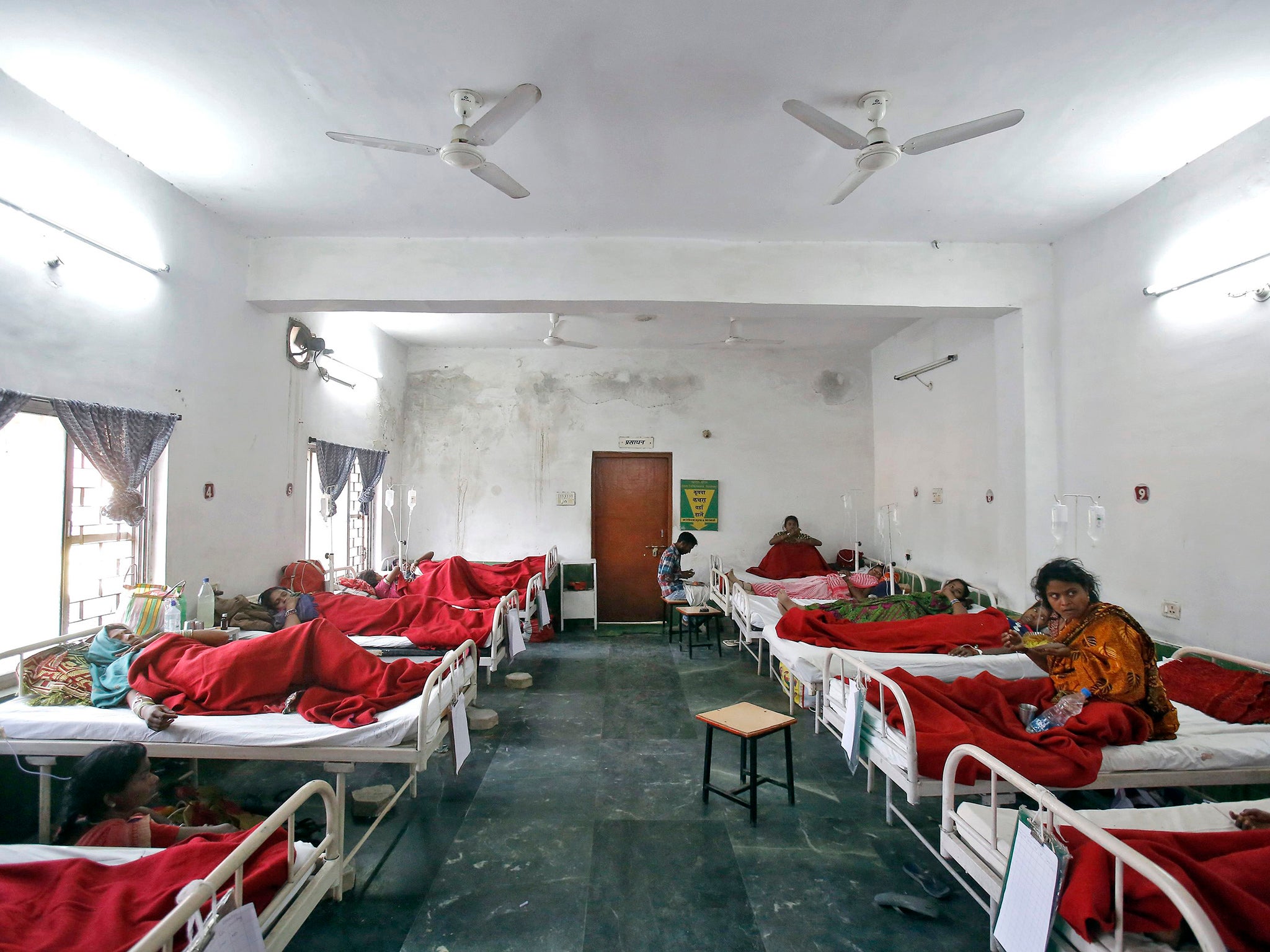The deaths of 12 women at a ‘sterilisation camp’ in India is raising serious ethical questions about paying women to have the procedure
Many health and women’s activists have long criticised the government’s overemphasis on sterilisation

It’s called sterilisation season.
In rural India, doctors and public-health officials aiming to meet family-planning targets set up “sterilisation camps” where women arrive by the jeep-load. They lie on makeshift operating tables while doctors quickly slice open their bellies, insert a laparoscope and tie their Fallopian tubes. There are quotas to meet.
The women – who have been enticed by a payment of a few rupees, a free sari or pots and pans – often writhe on the floor in pain after the procedure, and are sent back to their villages with a handful of painkillers and little follow-up care.
Last week, what some activists have criticised as a barbaric system of population control went horribly wrong at an abandoned hospital in the town of Bilaspur in the central Indian state of Chhattisgarh.
There, at least 60 women became sick after botched procedures on Saturday at a free mass-sterilisation camp set up by the district health department. Fifteen have died so far and at least 30 others are in a critical condition, state officials have said. Four doctors have been suspended and an investigation is under way.
Officials said on Wednesday that the surgeon performed 83 sterilisations in a little more than five hours, far more than the number recommended by guidelines. Women who survived the bungled procedures said they felt lucky to be alive and were bewildered by what happened.
Deepa Yadav, 22, who has two children, went to the camp with a relative on Saturday for her operation and became ill a few hours later. “Initially it was fine, but within a few hours I developed severe pain and started vomiting. I lost consciousness,” Yadav said. Relatives took her to a hospital. “I don’t know what went wrong. Many women from our neighbourhood have done this surgery before but such a thing never happened.”
She received 1,400 rupees, or about £14.50, to undergo the procedure.
Sterilisation is by far the most common method of family planning in India, government records show, with 37 per cent of married women sterilised, according to the country’s National Family Health Survey. Although the national government says it no longer sets targets for the number of women sterilised, unofficial goals still exist, said Avina Sarna, the director of the Population Council of India. A “motivator”, usually a local public-health worker, is paid 200 rupees (about £2) per head to bring a woman or a man to a camp for sterilisation.
Mihir Banerjee, the vice-president of People for Better Treatment, an organisation fighting medical negligence in India, said such camps prey on illiterate, low-income women who have no recourse when procedures go wrong.
“They conduct surgeries en masse in the most horrible conditions without caring for the safety of the patients,” Banerjee said.
This common birth-control method has a difficult political history in India. The Indian government began family-planning initiatives in the 1950s. But forced sterilisation for men to control a population boom in the 1970s – launched by Indira Gandhi’s government – led to a nasty backlash.
That troubled period set back government family-planning efforts for decades. It re-emerged later as “family welfare” – with the government health ministry offering an array of birth-control options, including condoms, pills and intrauterine devices.
The efforts lowered the fertility rate to 2.4 children in 2011, from 3.6 in 1996, government statistics say. Yet more work is needed to stabilise population growth in a country of more than 1.2 billion whose numbers grew by 181 million between 2001 and 2011.
Many health and women’s activists have long criticised the government’s overemphasis on sterilisation, saying it is a lazy way out of the labour-intensive work of sending counsellors to villages to educate people on the benefits of smaller families or regularly handing out birth-control pills and condoms.
Sarna said that family-planning advocates had hoped that the government would further expand contraceptive options provided through its public-health system, such as injectables or implants.
“It’s time for us to be able to provide a bigger choice and wider choice to women,” she said. “An incident like this will be a setback to the agenda because of the bad publicity it brings. It’s unfortunate. If women need to worry about dying, they’re not going to come for family planning.”
Meanwhile, the investigation of what happened in the sterilisation camp in Bilaspur is under way, said Siddharth Komal Pardeshi, the town’s district collector.
“It would be premature to comment on the cause of death or what exactly went wrong,” he said. “We are now focusing on the treatment of the sick women.”
Rama Lakshmi and Jalees Andrabi contributed to this report
This article first appeared in ‘The Washington Post’
Subscribe to Independent Premium to bookmark this article
Want to bookmark your favourite articles and stories to read or reference later? Start your Independent Premium subscription today.

Join our commenting forum
Join thought-provoking conversations, follow other Independent readers and see their replies